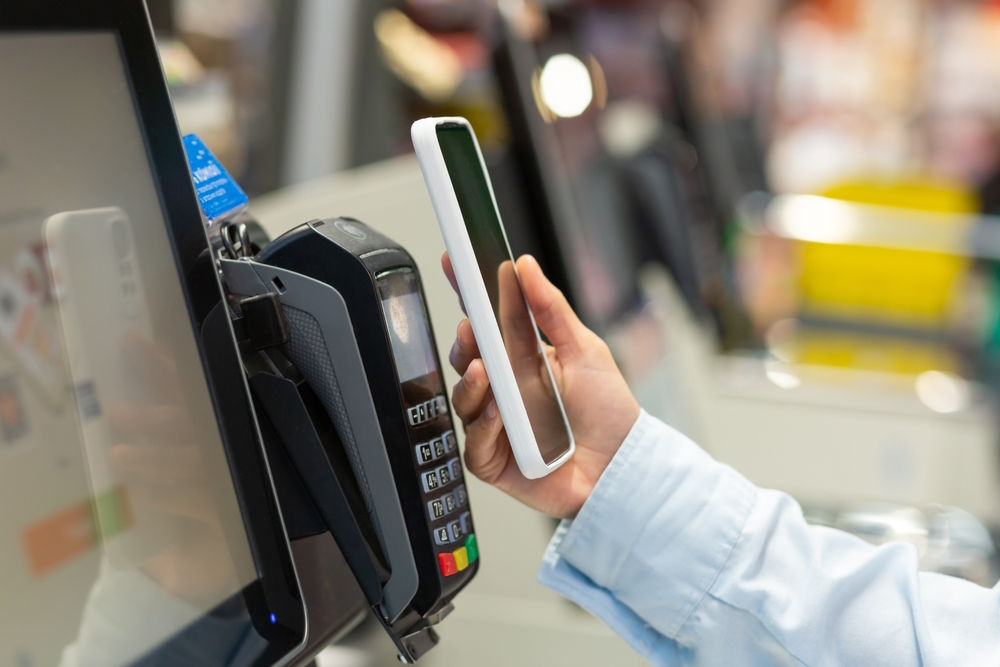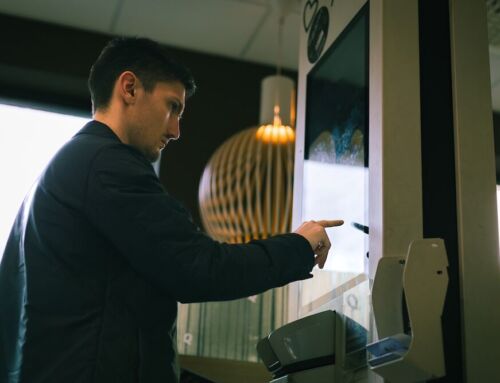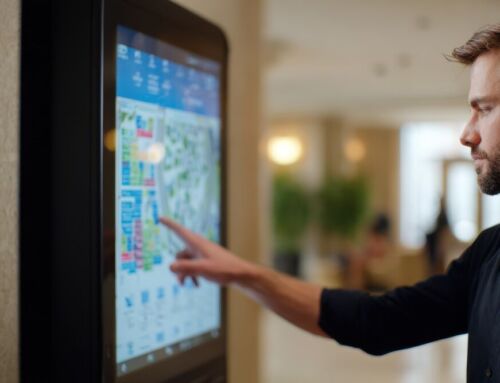There is a school of thought that kiosks and smartphones are in direct competition. That everything you can do on a kiosk, you can do on a mobile device. Pay for shopping without the mediation of a cashier, order food, check-in at a hotel or for an appointment, even identify yourself for security and access control – there are ways and means of doing it all via an app.
Most of the time, this opinion is raised to suggest that kiosks are living on borrowed time, that given the ubiquity of smartphones these days, they will inevitably take over in the end and make kiosks obsolete. The slight flaw in such an argument is that it has been doing the rounds now for more than a decade, in which time both kiosks and smartphones have flourished. There’s absolutely no sign of either cannibalising the success of the other.
The question then becomes, if it doesn’t seem that kiosks and smartphones are competitors after all, could they instead complement each other?
This is an interesting one. Because the fact still stands that, yes, a lot of the things people do on kiosks, you can indeed do on a mobile phone. So where are the synergies? What would be the value in having the two work in partnership?
Extending digital choice
Earlier this year, Ikea introduced its Upptäcka kiosks into stores. Always innovators in design, these units are characteristically chic and utilitarian, as you’d expect from the brand that has done more than any other to influence domestic interiors over the past 30 or 40 years.
But Ikea has also always been an innovator in customer experience. Its maze-like store layout, which physically embodies the notion of a ‘customer journey’ as you wander around exploring products, was years ahead of its time. More recently, Ikea has been at the forefront of using AR on its digital channels to allow customers to virtually mock up what furniture would look like in their own homes.
Like all the best kiosks do, the Upptäcka units add digital convenience to the in-store experience. For those who don’t have the time to enjoy the serendipity of the maze, they help locate items quickly and efficiently. They provide the usual rapid self-service fulfilment option to beat the cues.
But one other fascinating detail is that Ikea’s kiosks allow shoppers to find and explore items, check stock availability and so on – and then carry on seamlessly on their own mobile devices at a time of their choosing.
What does this kind of ‘offloading’ from kiosk to smartphone add? It’s largely about offering customers complete freedom of choice. Increasingly, the standard digital-physical divide is irrelevant to consumers. People shop on their mobiles and in store. It’s entirely commonplace for people to use their smartphones as they browse and shop in a store. The two are merging into one single thing.
So in that case, why should ‘physical’ shopping journeys have to end with a purchase at a physical POS? The logic of ‘digitising’ in-store experiences is not about making them any less store-like, or any less physical. It’s about layering on the very best parts of what digital offers. Like choice, flexibility, the freedom to complete that purchase as and when you want, in your own time.
As the Ikea example demonstrates, rather than there being any sense of competition between kiosks and smartphones, kiosks instead offer a prime example of how this digital-physical synergy can work.




